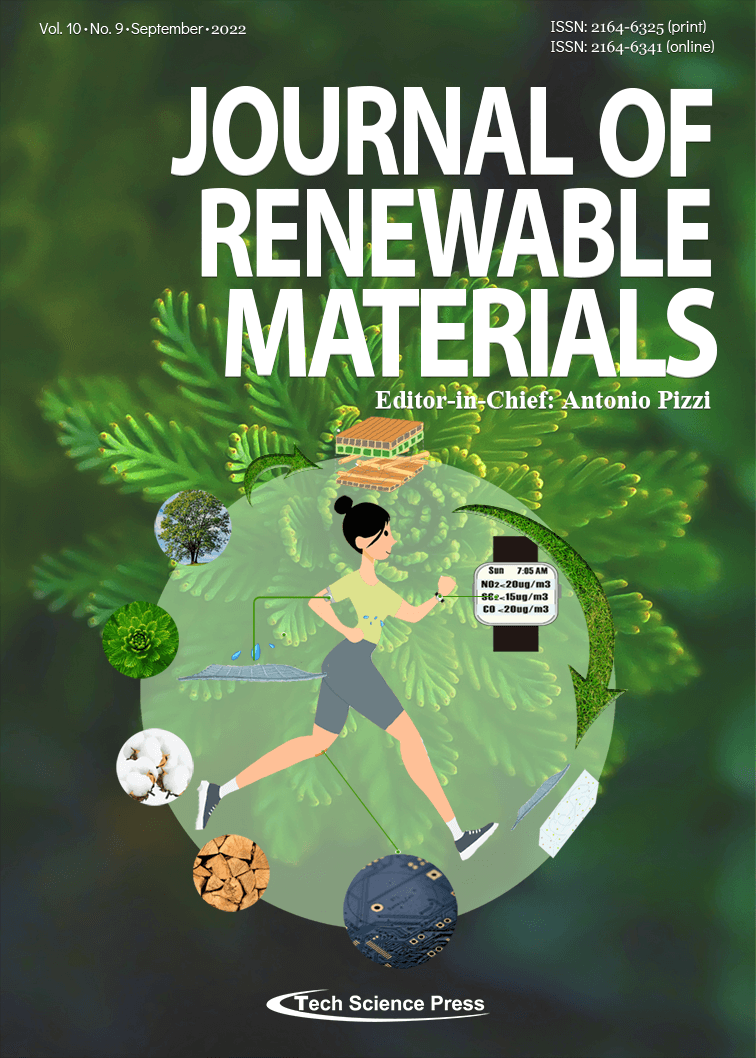Recent Progress in Cellulose-Based Flexible Sensors
Ningli An1, Jingxuan Qin1, Xing Zhou1, Quandai Wang2, Changqing Fang1,*, Jiapeng Guo2, Bin Nan2
Journal of Renewable Materials, Vol.10, No.9, pp. 2319-2334, 2022, DOI:10.32604/jrm.2022.021030
- 30 May 2022
(This article belongs to the Special Issue: Green, Recycled and Intelligent Technologies in Printing and Packaging)
Abstract Flexible sensors are attractive due to potential applications in body exercise and ambient gas monitoring systems. Cellulose and its derivatives have combined superiorities such as intrinsic and structural flexibility, ease of chemical functionalization, moisture sensitivity, and mechanical stability, enabling them to be promising candidates as flexible supporting substrates and flexible sensitive materials. Significant progress consequently has been achieved to improve mechanical, electrical, and chemical performance. The latest advance in materials synthesis, structure design, fabrication control, and working mechanism of novel cellulose-based flexible sensors are reviewed and discussed, including strain sensors, humidity sensors, and harmful gas More >
Graphic Abstract
